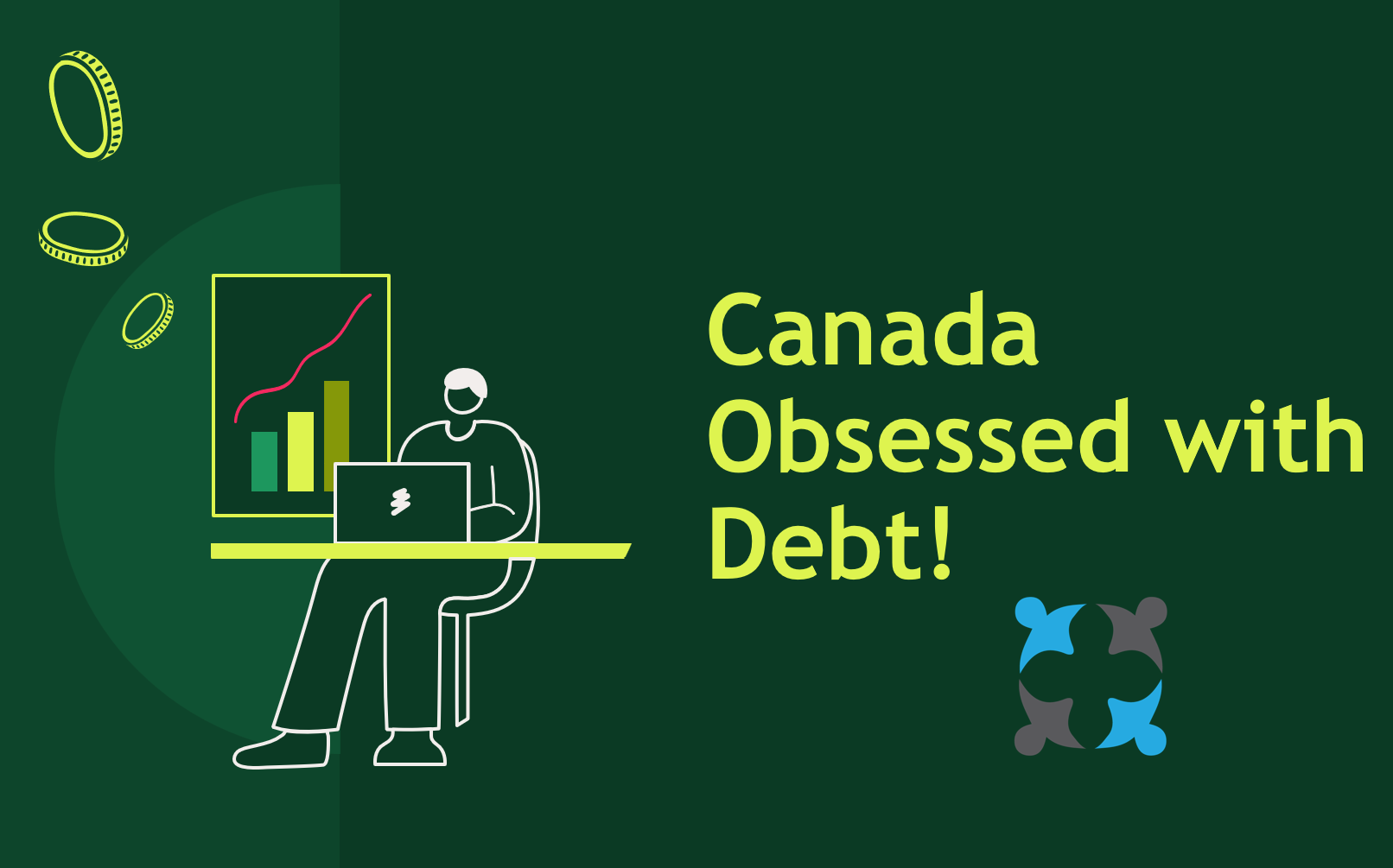Canada Obsessed with Debt

It’s true, the entire country, at all levels, is obsessed with debt! The national debt is extremely high, approaching $1.3 trillion, and so is the interest on that debt, about $100 billion per year. The interest represents a payment of $6,250 per year for every full-time employee in Canada.
Full Time Employment:
In bygone times, full time employment was defined as 40+ hours per week for blue collar workers and 37.5+ hours per week for white collar workers – of employment by a single employer.
Today, the definition of full-time employment used by the government is “30+ hours of work for one or a combination of employers”. Approximately 16 million Canadians meet the new definition for full time employment. It is estimated that up to 25% of full-time employees work for some level of government.
Taxation:
Taxation is an important consideration for both national and personal debt levels, taxation increases available funds to the government while decreasing available funds to the taxpayer.
The CRA reported that the mean income in 2022 was $54,000 and that slightly less than 30 million people reported income. The result is that we, Canadians, collectively reported about $1.62 trillion in total income. About half goes into some form of taxation – so the government received about $800 billion in tax revenue.
Consumers earned about $800 billion after paying(all) taxes – but that income was not divided equally, about 15 million Canadians had no income while most income earners reported incomes far below $54k.
Mortgage Debt:
Institutional mortgage debt is estimated to be around $2.4 trillion with several hundred billions of additional private funds being invested. In 2021 alone, CMHC estimated that some $183 billion of private funds had been invested in consumer mortgages.
Credit Card Debt:
Canadians are the most indebted consumers in the world, it has been extrapolated from the Canadian Bankers Association data that there are close to 100 million bank issued credit cards in circulation in Canada and that Canadians charged more than $850 billion on those cards during the past year.
Savings:
Canadian savings are being depleted at a rate never before seen, during the past decade there has been a massive liquidation of investment assets, especially RRSPs. RRSPs have been used as a sham investment vehicle to prop up excessive lending by the banks.
Banks lend money for RRSPs in order that the RRSP may then be liquidated (up to a capped value of $70,000) and converted to a Home Buyers Plan (“HBP”). The HBP is then used as “purported” down-payment on a mortgage purchase for 100% of the price of the property.
As noted in a previous article the government and the bank collude to report the investment as an asset as well as the mortgaged property, creating the illusion of wealth. The reality of debt accumulation tells a very different story.
When you borrow money to invest in an RRSP, or otherwise, you had better make sure the return on investment (“ROI”) is better than the cost of borrowing.
How do we get out of this?
If I had the answer, I would gladly tell you. We can help people get back to a debt free starting point but more and more we are seeing people jumping straight back into debt for two reasons, first they can’t afford to live without debt and secondly the banks are so over leveraged (like the world’s greatest Ponzi scheme) they would simply collapse if we all stopped using debt or withdrew all our money at the same time.
